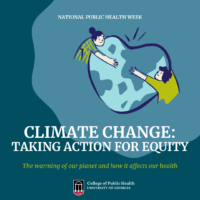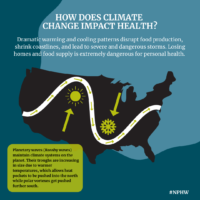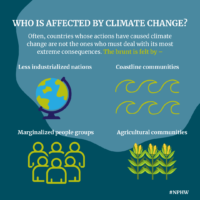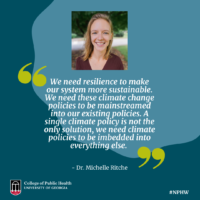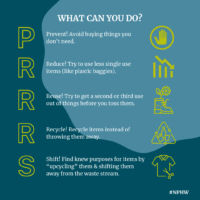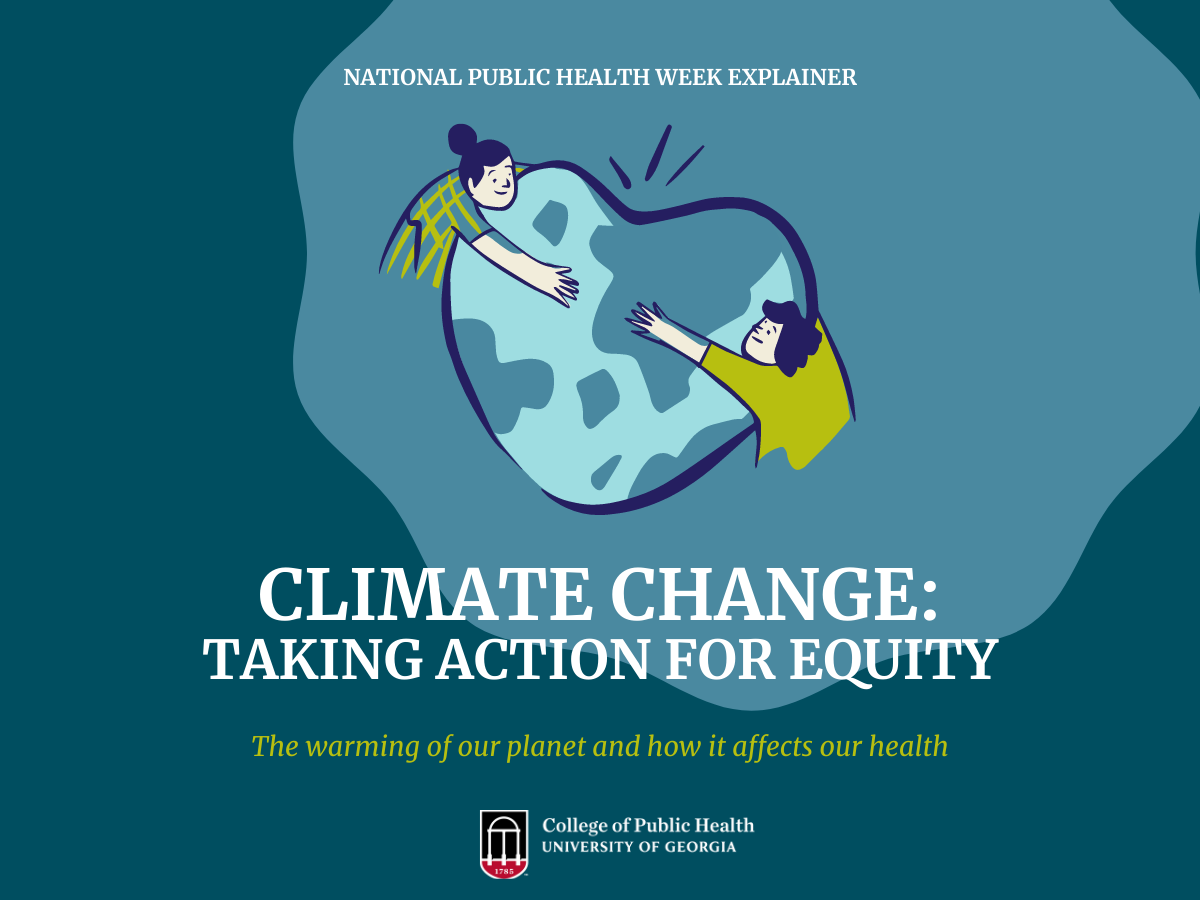
Dr. Michelle Ritchie
Climate change is impacting the health of communities and further exacerbating health inequities all over the world.
With expertise in geography and climate science, Michelle Ritchie, an assistant professor in the Institute for Disaster Management at UGA’s College of Public Health, explains below how climate change hurts our health and how we can take action.
How has climate change exacerbated health disparities in the U.S.?
Climate change is disrupting systems across the globe. These systems are not just climatic and ecological. They are economic and social systems like health care. As these systems are feeling the strain of warmer temperatures, more erratic weather patterns, eroding coastlines, and reduced access to arable land and safe drinking water, this exacerbates the health disparities that exist within health care systems, which disproportionately impact marginalized communities. We are beginning to see the evidence of a global climate apartheid. The people who are the cause of climate change, those who live in better resourced nations or communities, do not face the burdens of climate change in the same way as many indigenous, less resourced, and rural communities.
While it’s easy to focus on the adverse health outcomes related to disasters that are immediate and fast, like a hurricane, the slow disasters are what continue to build and strain the systems they impact as their effects accumulate. For example, heat waves are a growing concern for public health, and they are especially important for the health of Georgians. Students in my research lab are currently researching extreme heat mitigation strategies (Sloane Sengson) and how climate hazards are impacting rural Georgia communities (Max White).
How is climate change contributing to the frequency and severity of natural disasters?
The climate science behind this question is so dense, and the answers vary depending on what disaster we are looking at. Generally, the global climate system is undergoing changes due to human emissions of carbon, so with more heat there’s more accessible energy in the climate system to fuel more and stronger storms. For example, some of the dramatic swings in unseasonable weather that we’re seeing are due to warmer temperatures shifting the patterns of the planetary waves, known as Rossby waves, that help maintain our climate systems and keep weather patterns more-or-less stable and predictable. What we’re seeing is that climate change is exaggerating the troughs of these planetary waves, which allows heat to extend further North and polar vortexes to extend further South. We also need to remember that there are social causes for ‘natural disasters’.
How are communities adapting to a changing environment? Who is having to adapt?
We all need to adapt to our changing environment, and some of us already are without realizing it. When you have to drive to work a new way because the road you usually take keeps flooding – you’re having to adapt. There are a multitude of ways that individuals, households, and communities are adapting to the current and projected impacts of climate change. For example, everyone should plan for natural hazards and emergency situations before they occur. Disasters happen when needs outweigh capacities. So, being prepared to cope with events such as an extended loss of power or emergency evacuation can help you avoid disastrous situations.
At the individuals and household level, some additional good practices include (1) creating an evacuation plan with household members, close family, and friends, (2) signing up to receive local emergency and weather alerts, (3) storing pertinent emergency and health information about yourself on your smartphone (or otherwise write it down and carry it with you), and (4) creating and annually updating a bag of supplies, such as a first aid kit and 72 hours’ worth of food and water, that can be quickly accessed and relied on in an emergency situation.
Students in my research lab are finishing a systematic literature review on climate change adaptation strategies that have been implemented in the Tropics, and the question of who is having to adapt has lead us to take a critical look at the determinants of adaptive capacity (Kate Foral and Hope Grismer).
What policy changes are needed to address some of these pressing issues in the U.S.?
The policy changes needed to address the causes and impacts of climate change in the U.S. are many and have implications that extent far beyond political borders. Climate change is a public health crisis. It is also an intersectional issue that requires a comprehensive approach to implement solutions that make good local and global sense. We need critical approaches to resilience to make our social and ecological systems more sustainable and just, and climate change policies to be mainstreamed into our existing policies. A single climate policy is not the solution. We need climate politics to be embedded into everything else we do.
How can individuals reduce their ecological footprint?
Think of your ecological footprint as your impact on the world around you. Ecological footprints are calculated in terms of the amount of energy, water, and other resources you consume. The average person in the United States has a much higher ecological footprint than the average global citizen. With this in mind, there are a number of ways to reduce your ecological footprint like monitoring personal water use and reducing food waste. Reducing the use of fuel – flying less, carpooling, biking, eating food grown closer to you – are great options if they are accessible to you. The most important step is to become aware of your impacts so that you can seek to make meaningful changes. And consider this update on “the 3 R’s” Reduce, Reuse, and Recycle: “the PRRRS” Prevent, Reduce, Reuse, Recycle, and Shift.
- Prevent: Avoid buying things you don’t need.
- Reuse: Get as much use out of an item as you can.
- Reduce: Practice reducing your consumer consumption and energy use.
- Recycle: Recycle items instead of throwing them away.
- Shift: Find knew purposes for items by “upcycling” them and shifting them away from the waste stream.
Infographics created by Emily Loedding
Posted on April 8, 2022.
April 4-10 is National Public Health Week! Follow our social media channels – Facebook | Twitter | Instagram| LinkedIn – as we highlight current challenges around each issue, and share how CPH is helping to make our communities healthier, stronger and safer!

